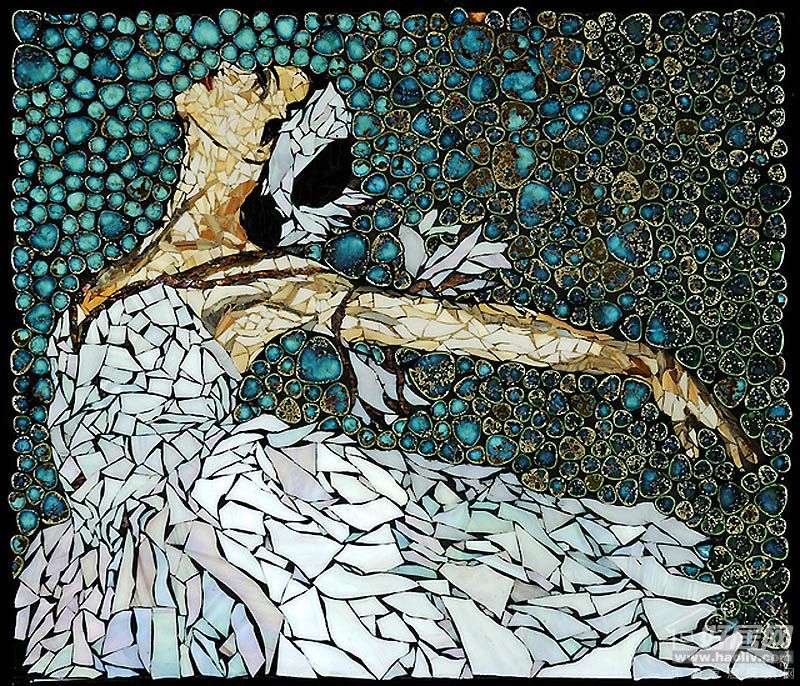Cover Photo: Jane Perkins
It’s hard to believe that we started this blog almost two years ago today! As a content curator and main blogger of this online journal, my major aim and concern was to highlight and restore an ancient art form one letter at a time. Yes, it’s almost two years. Can you believe it? Time flies, but the memories collected along the way can never be replaced. Has anyone heard me say time (again) ? A lot of us take so much time to honor linear possessions, but there are instances when we should also honor time itself.
I’ll grab the chance to bring back five of my favorite posts about “Time” I wrote this year:
5 Mosaic Art Cities Of The Future
What Does the Future of Mosaic Art Look Like?
Conceptual Art: Visualizing Temporal Data
Roman Mosaic Discoveries Made Through Time
In Today’s article, I’ll take another trip across space and back through time to experience an art form of several mores and historical episodes. Ever since the earliest times, Humanity has witnessed challenge and mystery in the natural world. Similar to anthropological art, early mosaics depict animals, humans and include archaic symbols. Each reproduction became a spontaneous construction through the filter of time and space. Today, Mosaic Art appears in a vast variety of mediums and means. These include the mammoth mosaic installations and digital mosaic imaging of our age. In contrast, contemporary mosaics or artworks being made today, the subject or story is more important than the materials and mediums used to make it.
Art has been a philosophy through which humanity has not only acknowledged, but also twisted history—both past and future.This article will take you on a brief wonder-filled journey through the past, present and future of Mosaic Art.
Past : What were the Origins of Mosaic Art?
In your opinion, could we ever travel back in time? Time travel has always been one of our wildest fantasies for centuries. According to recent scientific theories, traveling back in time to witness the Egyptians build the pyramids or watch the Greeks creating pebble mosaics is doubtfully vague. However, it’s not necessarily impossible. Hence, a little historical background might take you on a magical trip back in time to the Neolithic Period around 6,000 years ago arriving to Roman and Byzantine empires.
Neolithic Period 4000 BC:
Mosaic patterns first surfaced through the use of terracotta cones being applied point first onto structures as a means of decoration. They were colorful and didn’t follow a defined form.
Bronze Age 800 BC
After being used for decorative purposes, mosaics appeared as an ornament to pebbled pavements.
Hellenic Period 400 BC
Mosaic art in Greece took a more structured shape, converting the pebble method into an art form, with defined geometric patterns and portraiture.
Roman Empire 27 BC
With the rise of the Roman Empire, took mosaics further afield, although the echelon of talent and creativity was still weak. Their subjects were scenes to commemorate their gods and marital themes.
Byzantine Empire 5th century
Eastern influences became visible in mosaic patterns and designs. The use of, Smalti, glass tesserae sourced from northern Italy, proved to be popular in the Byzantine period. Byzantines made sure to install their tiles at correct angles in order to allow light reflection and refraction.

Present : In What Ways is Mosaic Art Different Today?
Although there is no single central feature to compare mosaic art today with the mosaics of the Byzantines period, a medium revival was perceived for a number of important traits. Mosaic art today was discernible by a combination of great technical skill and widespread use. The world today celebrates a creative appearance of a contemporary mosaic art wave, and a rising presence in the world of modern art. Modern mosaicists are expanding their visions in collage art, assorted forms of assemblage, variety of kinetic mosaic art and of course the digital mosaic art wave. Nonetheless, Tesserae are still perceptible in modern mosaic artworks inspired the ancient famous techniques and urbanized in designs and cleverness.
Future : What Does the Future of Mosaic Art Look Like?
As I thoroughly explained in a previous article, a new archetype is expected to appear before the end of the 21st century. This idea has been envisaged for quite some time now, and could be disclosed by 2030 or earlier. Inspiration draws from every corner of life, and this art form is expected to foment a new art rebellion shortly.


Featured Mosaics: Courtesy Of Laura and Jack Harris
What better way to conclude this article than with a quote by the great Author of Watchmen? “There is no future. There is no past. Do you see? Time is instantaneous, a complicated prearranged gemstone that human beings persist on screening one frame at a time, when the whole concept/story is observable in every facet.”
Last but not least, i’d like to thank y’all for reading, as I hope that this article has been inspiring and informative!
Here’s to many more years together!



